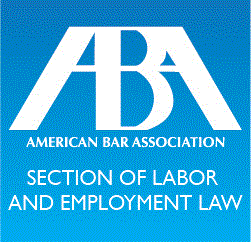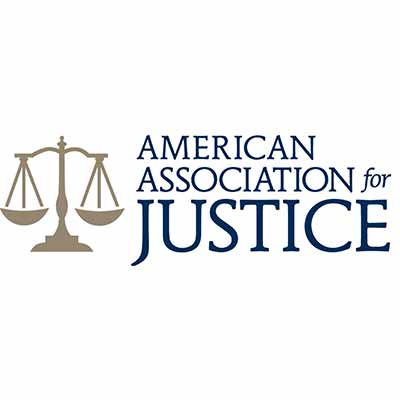Part II: Empowering Your Future: Navigating NHRS Retirement Options for Public School Employees - Decoding Service and Disability Benefits for the Best Choice
In our series, Back to School for Educators and Staff: Your NHRS Pension Benefits Guide- A Four-Part Series, Part II, we give you more of what you need to earn your masters in retirement planning, by unraveling the differences between NHRS Service Retirement and Disability Retirement benefits.
I. ONE OF THESE THINGS IS NOT LIKE THE OTHER
Service Retirement is the benefit received when retiring from work upon reaching a certain age and years of service. This is distinguished from Disability Retirement, which occurs when an employee must leave work early due to a disabling injury or illness that prevents the employee from performing their NHRS job.
It’s possible to be eligible for both types of benefits and in fact, not all that uncommon.
In such cases, the employee must choose which one to take. The trick is, there is no one size fits all advice in this regard, so every employee needs to do a side-by-side comparison of the benefits as compared to their circumstance.
Here is break down of the basic definitions, eligibility requirements, and benefits for these two types of retirement pensions available for School Employees’. We also include a few tips and traps to keep in mind when considering which benefit is right for you.
II. SERVICE RETIREMENT
There are three types of Service Retirement:
- Service Retirement
- Early Service Retirement
- Vested Deferred Retirement
Eligibility for service retirement benefits varies by the benefit type, but unlike disability benefits the employee needn’t show an inability to perform their NHRS job. Instead, eligibility for Service Retirement is primarily based on age, and/or a combination of age and years of service in NHRS.
Eligibility requirements for Service Retirement vary depending on the year the member began their NHRS service.
For members who commenced NHRS-covered service prior to July 1, 2011, the eligibility requirements are as follows:
SERVICE RETIREMENT
These members are eligible for Service Retirement at age 60, regardless of their years of service.
EARLY SERVICE RETIREMENT
In addition, members aged 50-59 with at least 10 years of creditable service in Group I, are eligible for Early Retirement at a permanently reduced pension benefit. Further, members with more than 20 years of creditable service in Group I whose service time and age are equal to or greater than 70 are also eligible for Early Retirement at a permanently reduced pension benefit.
VESTED DEFERRED RETIREMENT ELIGIBILITY has its own rules:
Even if a member’s active NHRS membership ends prior to eligibility for service retirement, the member may be entitled to a vested deferred retirement pension from NHRS in the future under the following conditions:
- The member has a minimum of 10 years of credible service when the member terminates active membership; and
- The member doesn’t withdraw their accumulated contributions from NHRS.
III. DISABILITY RETIREMENT
Members who are no longer able to perform the duties of their NHRS-covered employment due to an incapacity (either mental or physical) that is likely to be permanent, may qualify for disability retirement benefit.
Like service retirement benefits, the disability retirement pension will be payable for the eligible member’s lifetime if the member’s disability continues and like the service retirement pension, the monthly payments can potentially pass on to the employee’s beneficiary based on payment selection made upon retirement.
There are two kinds of disability retirement. The first is Ordinary Disability (non-job related), and the second is Accidental Disability Retirement (job-related).
1. Ordinary Disability Retirement (non-job related)
Eligibility Requirements for ODR
A member may qualify for ordinary disability retirement under the following conditions:
- Active member becomes disabled due to a non-work related condition, AND
- The member’s disability is likely to be permanent, AND
- The member has a minimum of 10 years of creditable service, AND
- The member’s application for disability retirement is filed within one year of the date the member’s contributions to NHRS cease, AND
- The member’s disability retirement application is approved by the NHRS Board of Trustees
Ordinary Disability Monthly Pension Benefits
Group I members are eligible for pension calculation based on the following:
- 5%, multiplied by average final compensation, multiplied by creditable service equals approximate annual pension amount.
- All Group I members are guaranteed a minimum ordinary disability retirement pension amount equal to 25% of their average final compensation.
- The benefit formula for Group I members who retire on an ordinary disability retirement after the age of 68 will be based on the provisions for service retirement.
- These pension benefits are taxable.
Filing For Ordinary Disability Retirement (non-work related) (ODR) Benefits
Members filing for ODR benefits must file an application for disability retirement with NHRS under one of the following conditions:
- While the member is actively contributing to NHRS on earnings paid to the member by the NHRS employer, or on earnings from an employer-funded disability or salary continuance plan.
- While the member is on an approved leave from NHRS-covered employment under the provisions of the federal Family Medical Leave Act (FMLA).
- While the member is in receipt of regular Worker’s Compensation payments and still employed by the same employer in an NHRS-covered position.
- Within one year of the date the members’ contributions to NHRS ceased.
Ordinary Disability Retirement EXTRA CREDIT
Because Ordinary Disability Retirement is limited to those with more than ten (10) years of creditable service, employees with fewer than ten years in NHRS are at risk in the event that they suffer a disabling illness or injury that isn’t job related. A car accident, cancer, or any other mishap could pose significant financial hardship if it occurs before vesting. Therefore, it’s important that employees with less than 10 years of service consider getting their own supplemental insurance.
2. Accidental Disability Retirement (job related)
Eligibility Requirements for ADR
A member may qualify for accidental disability retirement under the following conditions:
- Active member becomes disabled due to a work-related condition, AND
- Member’s disability is likely to be permanent, AND
- Member’s application for disability retirement is filed within one year of the date the member’s contributions to NHRS cease, AND
- Member’s disability retirement application is approved by NHRS Board of Trustees.
- While there is no minimum service required for this benefit as there is for ordinary disability retirement (meaning an employee could qualify in their first year of employment if they suffer an accidental disability at work), generally, there must be a finding of compensability under Worker’s Compensation by the employer, the employer’s insurance carrier, or the commissioner of labor.
- The determination of “causation” establishes the criteria that this is a job-related disability, which then waives any requirement for minimum service.
Accidental Disability Monthly Pension Benefits
- By comparison to Ordinary Retirement, pension calculations for Group I employees who retire due to Accidental Disability Retirement are based on the maximum retirement allowance payable and do not include any applicable reduction under an optional allowance.
- Group I members will, therefore, receive an annual pension amount equal to at least 50% of their average final compensation. (Compare to the 25% minimum for ordinary disability)
- ADR benefits are typically NOT taxable.
Filing For ADR Benefits
Members must file an application for accidental disability retirement with NHRS under one of the following conditions:
- While the member is actively contributing to NHRS on earnings paid to the member by the NHRS employer, or on earnings from an employer-funded disability or salary continuance plan.
- While the member is on an approved leave from NHRS-covered employment under the provisions of the federal Family Medical Leave Act (FMLA).
- While the member is in receipt of regular Worker’s Compensation payments, and still employed by the same employer in an NHRS-covered position.
- Within one year of the day the members contribution to NHRS ceased.
Accidental Disability Retirement EXTRA CREDIT
Between the increased monthly pension benefit and the fact that the ADR benefit is not taxable, those who qualify for Accidental Disability Retirement Benefits often find this is the best benefit to elect. However, there is more to consider and if you’re trying to decide which retirement benefit is best for you, and certainly, if you are considering a workers’ compensation settlement where there is a disabling injury or illness involved, you may want to consult with an attorney experienced in BOTH workers’ compensation and school employment laws. The union may be able to help with this or you might be able to get a free evaluation, but you should expect that any thorough evaluation will probably include a review of your applicable contracts, policies, and benefits. You can help prepare for this valuable evaluation by gathering the necessary documents for review yourself.
See Part III of this series for a list of documents and benefits to gather and review before settling a claim involving the end of your NHRS employment.






